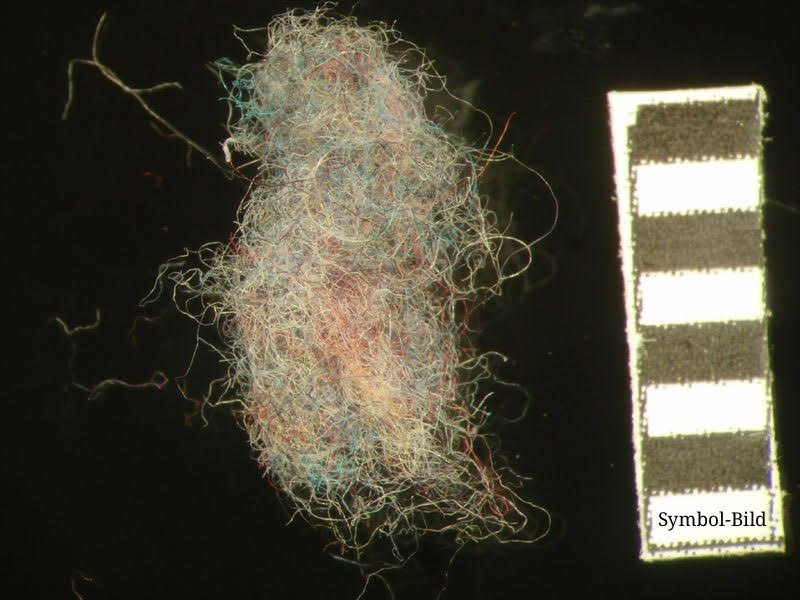Source: Electrophoresis (1996), 17(7): 1194, doi: 10.1002/elps.1150170704.
Mark Benecke, Jörg T Epplen, Einhard Schierenberg
Abstract
We have not been able to distinguish different isolates from the nematode Caenorhabditis elegans by morphological means. However, they differ on the molecular level and strains from several geographic regions can be identified with the help of "genetic fingerprints" using the oligonucleotide probe (GTG)5.
Studying Caenorhabditis elegans strains isolated from different geographic regions, we could detect no apparent differences on the microscopic level. Even using random amplified polymorphic DNA (RAPD) analysis we were not able to distinguish them (unpublished data). Polymorphisms on the protein level have not yet been described for C. elegans [l]. Previous attempts to find differences between C. elegans strains with the help of hybridizing oligonucleotide probes that recognize ubiquitously interspersed simple repetitive sequences (“genetic fingerprints”, [2]) had been unsuccessful [3]. Recently, however, variations in the pattern of the transposable element Tcl revealed molecular differences between various C. elegans strains [4]. Here we report that the oligonucleotide probe (GTG), allows the identification of different C. elegans isolates because of variances in the banding pattern on an agarose gel. While most bands are identical for all strains, we found several of diagnostic value in the high molecular region (6.5-8.0 kbp). We compared four strains to the standard laboratory strain (N2). While one isolate from southern Germany, plus two additionally tested transgenic strains (pD56, pD126) derived from N2, appear to be identical with N2 (data not shown), three other isolates from different countries show unique banding patterns (Fig. 1).
Protocol: Nematodes were cultured on agar plates [5], washed off, separated from bacteria [6], digested with proteinase K (overnight) and then phenol-extracted [7]. Ten pg of genomic DNA were digested with 50 units of HaeIII at 37°C overnight and then separated on a 0.9% agarose gel (20x20 cm) at 40 V for 24 h. The entire gel was dried on a gel drier [8]. Alternatively, DNA fragments were transferred to a nylon filter (Southern Blot).
The filter was incubated in a prehybridization solution containing 5 X SSC (0.75 M NaC1, 0.075 M trisodium citrate, pH 7.0), 0.1% SDS, 1% blocking agent (Boehringer), and then hybridized for 3 h at 37°C to 10 pM/mL DIG-marked (GTG), oligonucleotide. The presence of this oligonucleotide was visualized using the chemiluminescent reaction [9] with anti-DIG-alkaline phosphatase and CDP-Star (Boehringer Mannheim) or Lumiphos 530 (Cellmark Diagnostics). Critical bands become visible on X-ray film (Agfa Curix) after a few minutes up to several hours depending on the quality (age) of the chemiluminescence substrate. Additionally, radioactive visualization produced the same result.
Strains were obtained from the C. elegans Genetics Center, University of Minnesota, St. Paul, which is supported by NIH. We thank Dr. C. Epplen for her technical support and Dr. C. Blendl, Ada Co., for X-ray film.
References
[l] Butler, M. H., Wall, S. M., Luehrsen, K. R., Fox, G. E., Hecht, R. M., J. Mol. Evol. 1981, 18, 18-23.
[2] Jeffreys, A. J., Wilson, V., Thein, S. L., Nature 1985, 316, 76-79.
[3] Uitterlinden, A. G., Slagboom, P. E., Johnson, T.’ E., Vijg, J., Nucleic Acids Res. 1989, 17, 9527-9530.
[4] Egilmez, N. K., Ebert, R. H., Reis, R. J. S., J. Mol. Evol. 1995, 40, 372-381.
[5] Brenner, S., Genetics 1974, 77, 71-94.
[6] Sulston, J. E., Brenner, S., Genetics 1974, 77, 94-104.
[7] Sambrook, J., Fritsch, E. F., Maniatis, T., Molecular Cloning: a laboratory manual, Cold Spring Harbor Laboratory Press, Cold Spring Harbor, NY 1989.
[8] Zi.schler, H., Hinkkanen, A,, Studer, R., Electrophoresis 1991, 12, 141-146.
[9] Prinz, M., Loch, C., Staak, M., in: Rittner, C., Schneider, P. M. (Eds.), Advances in Forensic Haemogenetics, Springer, Heidelberg 1992, Vol. 4, pp. 156-158.





